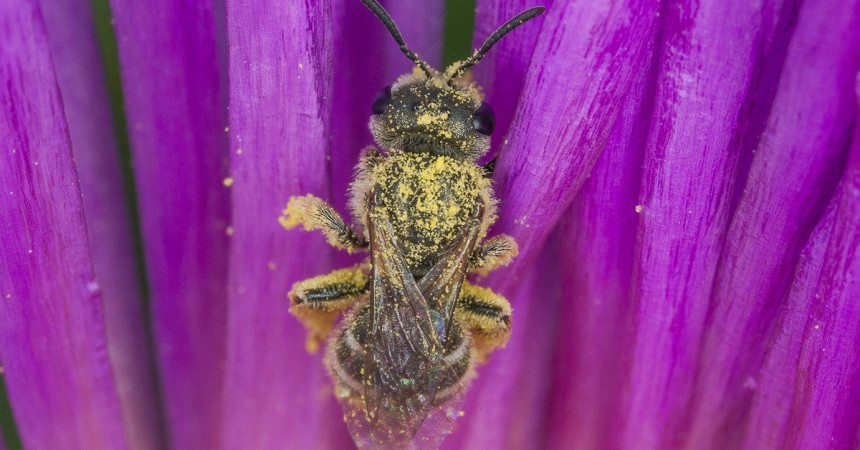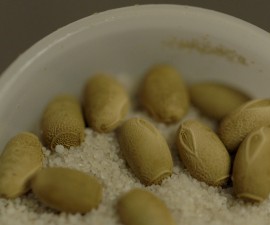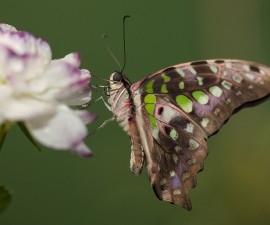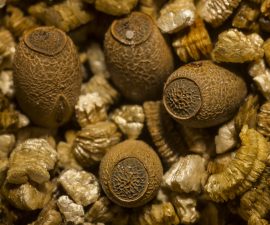Have you heard the buzz? This is National Pollinator Week (June 20 to 26)!
We can thank pollinators for many of our favorite foods—blueberry muffins, almonds, coffee, apples, and chocolate, just to name a few. Can you imagine living in a world without them? A pollinator is an animal that moves pollen from one part of the flower of a plant to another part, or between blossoms of different individuals. The pollen fertilizes the ova. Only fertilized plants produce fruit and/or seeds, without which certain plants can’t reproduce. Of course, humans have an interest in the production of fruits and seeds, since they make up an important part of our diet!
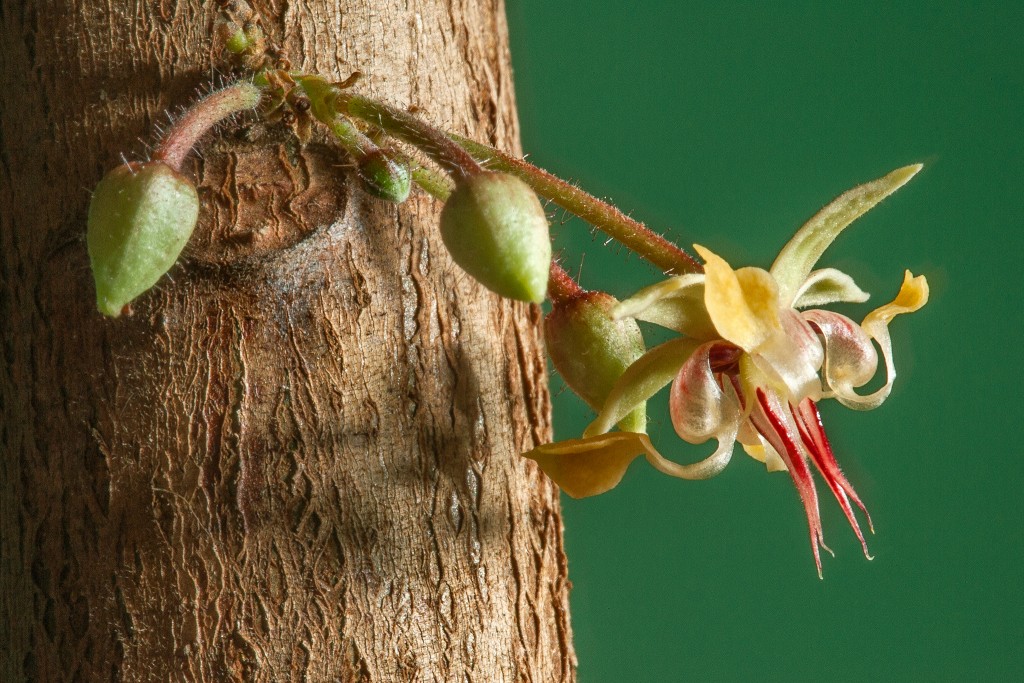
Blossom of Theobroma cacao. After pollination, the fruit that forms is harvested and used to make chocolate.
It’s estimated that we owe one of every three bites of food to insect pollination. But many of these pollinator species are heading towards the brink of extinction. And it’s not just insects that are in trouble; three bird or mammal pollinators move closer to extinction every year.
Plants and their pollinators have evolved right alongside each other for millennia. Most flowering plants are dependent on their pollinators to set seed, and pollinators rely on the rewards that the plant provides (nectar and pollen). If a pollinator is lost, the plant that depends on its services may also be threatened.
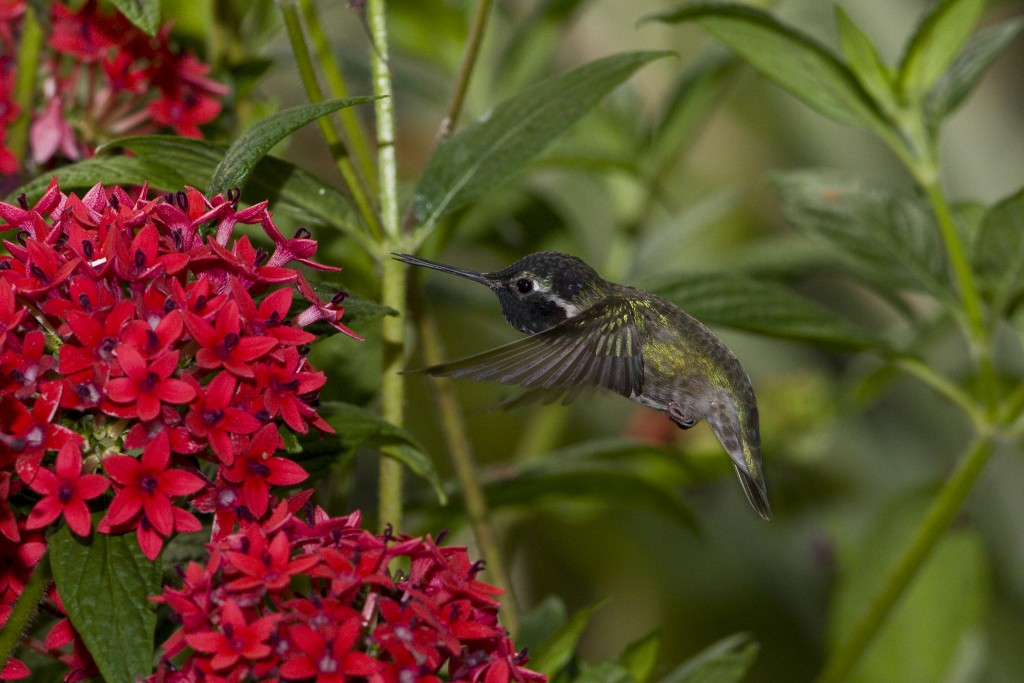
While other animals do act as pollinators, insects are the powerhouses in this area. These important invertebrates are often overlooked, but San Diego Zoo Global participates in several pollinator conservation projects aimed at helping them—and you can, too! There are a number of actions individuals can take to help pollinators, ranging from simple to in-depth.
Provide Food: Fill your yard with flowering plants—especially native species—will benefit from the food (nectar) source. If you have a vegetable garden or fruit trees, the flowers will help draw the pollinators that will boost your harvest. No yard? No problem! Pots of flowering plants on a balcony are just as helpful and important.
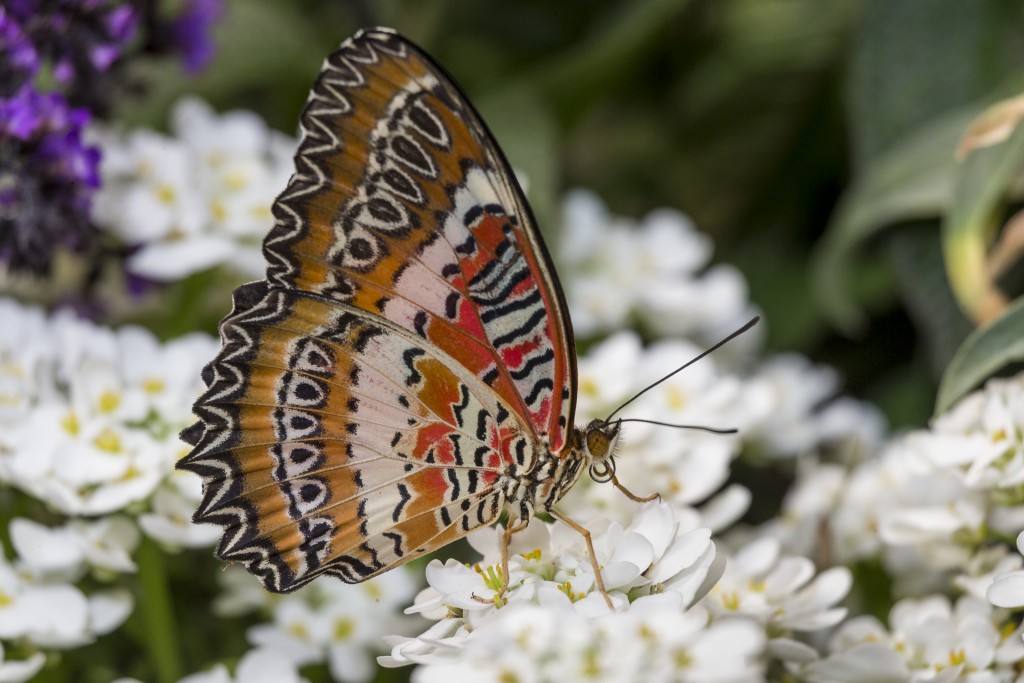
Give ‘Em Shelter
Pollinators need a place to rest and reproduce, too! Some native bee species are solitary. Instead of hives, they seek out small spaces. Homes for these types of bees (as well as for butterflies), are available online, as are directions for making them yourself. Keeping a densely planted area (even a weed patch) can provide shelter for pollinators of all kinds, too.
Pesticides? Pass!
Avoid using pesticides on your plants or anywhere in your yard. When you purchase plants for your pollinator habitat, ask the nursery staff if they have been grown without pesticides. The toxic chemicals can get into the plant’s system, so even if you don’t use pesticides, the residue can harm pollinators.
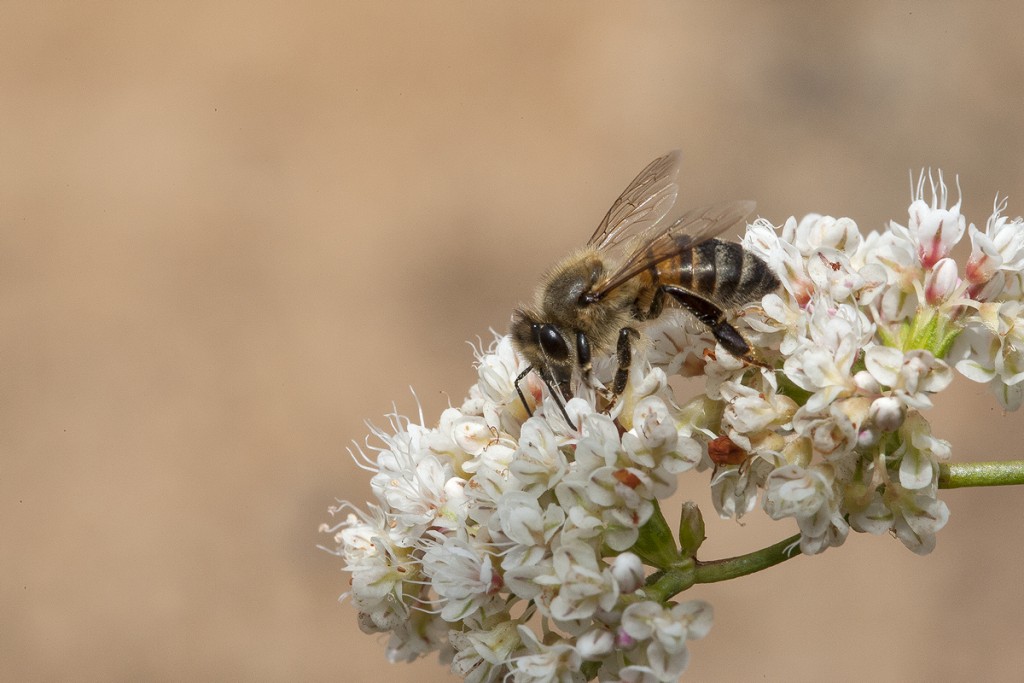
Join us in giving power to the pollinators—and happy National Pollinator Week!
Tristen Averilla is a lead educator at the San Diego Zoo.
Jamie Ferguson is a keeper at the San Diego Zoo.

